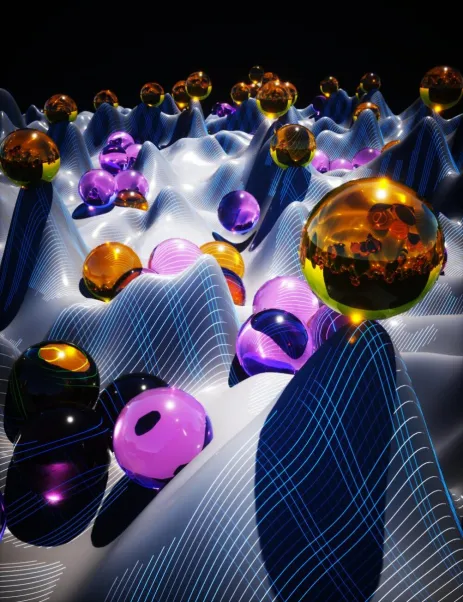Orderly disorder: Cambridge scientists make surprising perovskite discovery
- Researchers have made a finding they say could vastly simplify and reduce the production cost of perovskite solar cells. Working with mixed halide perovskites, the group found a disordered chemical composition can improve device efficiency.

Scientists at Cambridge University have found perovskite materials can be more efficient as solar cells or LEDs when their structure is less ordered. It is a discovery the group says could greatly simplify the production of such devices and may open up processes such as inkjet printing for the manufacture of high efficiency solar cells.
Research into perovskites has typically assumed the more ordered the structure the higher the efficiency, as is the case with crystalline silicon PV materials. However, in observing the materials in action, the Cambridge group found disorders created areas with varying composition which could trap the energized charge carriers produced by light and reduce recombination.
“The beauty of the study really lies in the counter-intuitive discovery that easy to make does not mean the material will be worse, but can actually be better,” said Sascha Feldmann, a PhD student at Cambridge’s Cavendish Laboratory. “It is actually because of this crude processing and subsequent de-mixing of the chemical components that you create these valleys and mountains in energy that charges can funnel down and concentrate in. This makes them easier to extract for your solar cell.”
The work is described in a paper published in Nature Photonics.
Photo-doped regions
The group used time resolved spectroscopy, optical bandgap mapping and electrically gated transport measurements to demonstrate the varying material disorders lead to local charge accumulation, creating p and n-type photo-doped regions.
“It was fascinating to see how much light we could get from these materials in a scenario where we’d expect them to be quite dark,” said Stuart MacPherson, a PhD student at Cavendish. “Perhaps we shouldn’t be surprised, considering that perovskites have re-written the rule book on performance in the presence of defects and disorder.”
The group’s next task will be to find ways to better control the disorder, and to work on fabrication techniques to achieve maximum efficiency. The scientists suggested their work could lead to solar cell efficiencies beyond what is possible with crystalline silicon and even silicon-perovskite tandem devices. “If we can learn to control the disorder even more precisely, we could expect further LED or solar cell performance improvements,” said Sam Stranks, the paper’s corresponding author. “And even push well beyond silicon with tailored tandem solar cells comprising two different-color perovskite layers that together can harvest even more power from the sun than one layer alone.”
Stranks added, perovskites are still limited by their sensitivity to moisture. “There’s still work to do to make them last on rooftops the way silicon can– but I’m optimistic,” he said.
Also read


